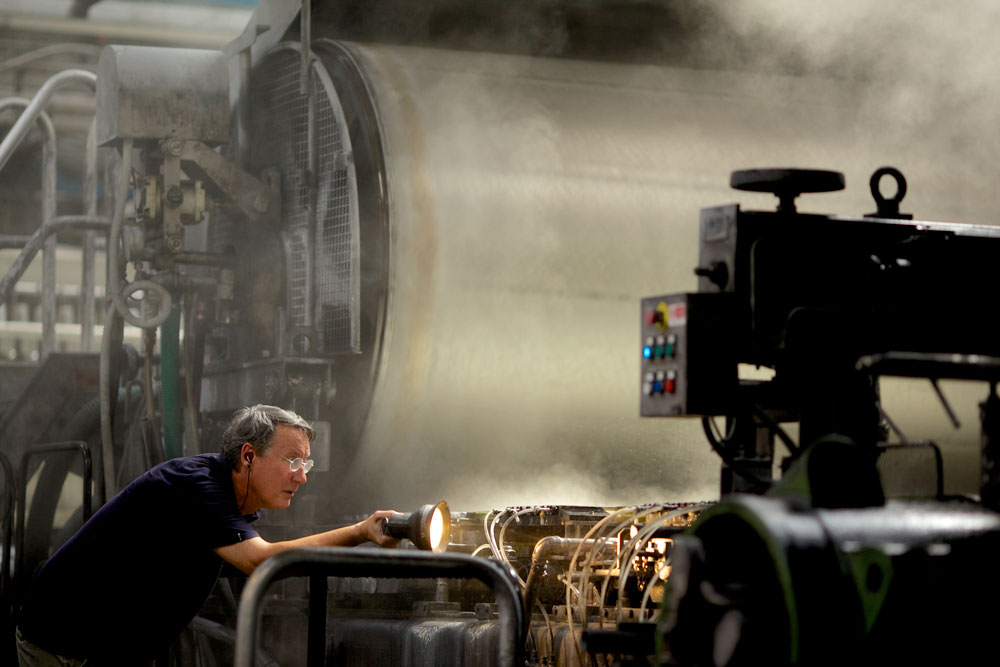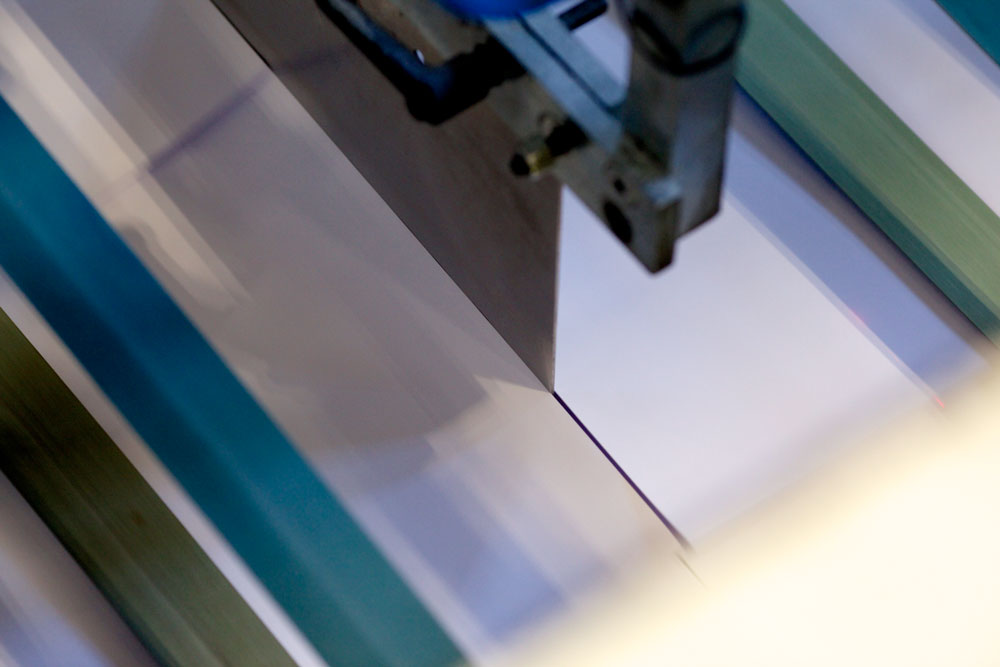The plant is divided into different sectors and it is therefore logical to start from the beginning, from where everything originates: we touched the cellulose, the raw material, and then observed a pulper in action. The blades rotate in the large cylindrical container which shred about two tons of recycled paper, reducing it to pulp, which is then drained to move on to another phase of the production chain. In the next machine the material begins to dry and take shape, allowing the fibers to form an intertwined structure: here the rollers begin to work and what will then become a sheet of paper quickly passes among them. Other water is eliminated while the paper continues its run through other large cylinders that remove the residual moisture: at the end of the whole process the material is rolled into huge reels which, once complete, are lifted by hoists and stored.
Customizations or specific interventions could take place during various steps, and in passing from one department to another it is common to come across materials ready to be delivered to customers. Here we had the opportunity to directly touch the paper made for some luxury brands: the tactile experience is very engaging, just touch a few sheets of some samples to perceive the work behind a particularly embossed paper, or admire the amazing brightness of another paper.
Finally, we noted how the extraordinary journey that leads to the creation of the final product has a series of points that Fedrigoni rigorously applies: among these, the workers safety and the attention to the overall impact on the environment. Not only all the water used is returned and cleansed, but other precautions that have been taken over the years have led to a series of very important results, including energy autonomy, now more fundamental than ever, achieved thanks to the photovoltaic system.
In the Verona paper mill, “Making progress” appeared to us to be anything but a slogan, but rather a series of concrete actions followed by tangible benefits.






